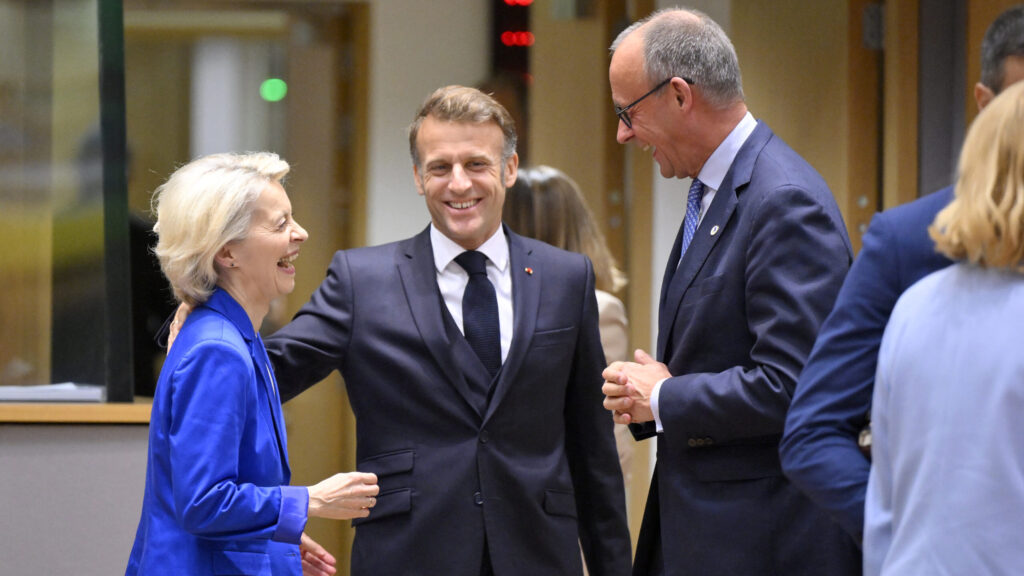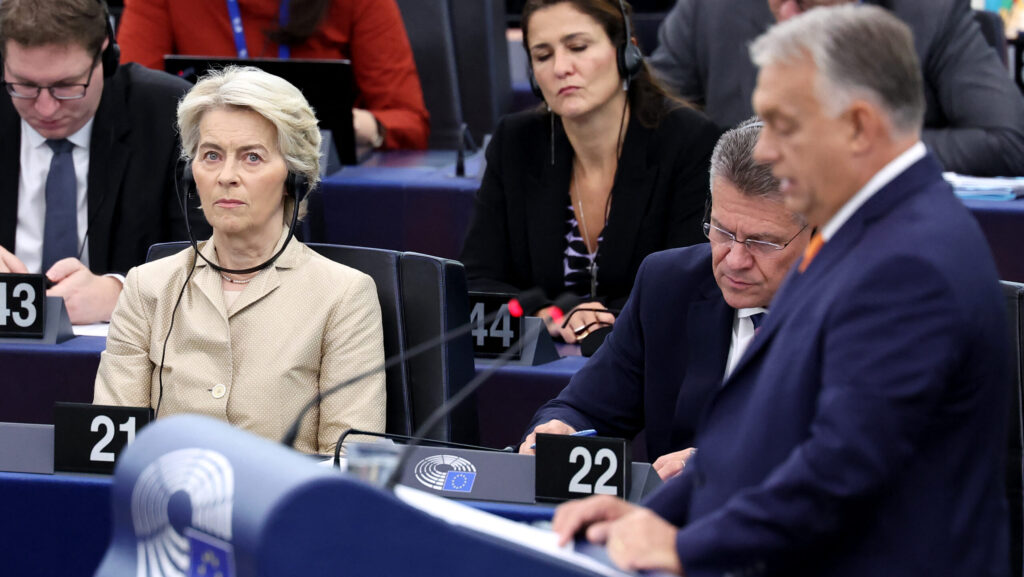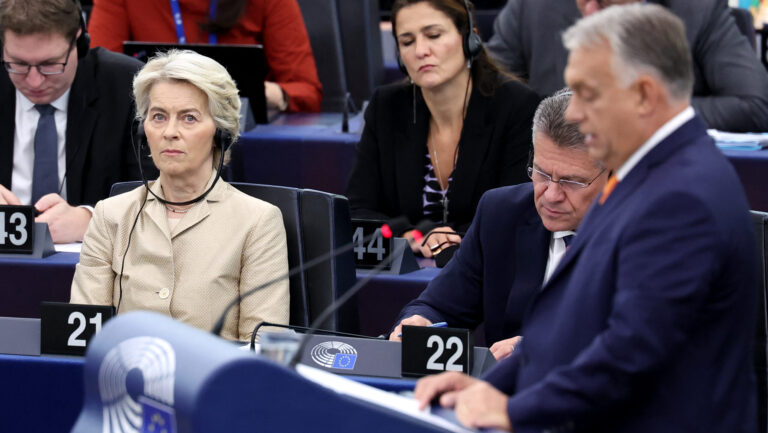Last week, the company behind the Facebook group Nyugati Pályán (which roughly translates to ‘On Western Course’) launched a billboard campaign, in an effort to counteract the Orbán administration’s public messaging about being on the side of peace. The ties to the US government are apparent (deliberately so): not only do the billboards themselves carry disclaimers about the campaign being funded by the US Embassy, but the Nyugati Pályán page itself has been quite transparently receiving funds from the American mission in Hungary. However, it is operated by the Budapest-based Flow PR public relations firm.
In this regard, the ad campaign also seems to reinforce the notion of the ‘dollar left’ being present in Hungary.
For some time now, Fidesz politicians and right-wing media have been calling out the opposition parties and media outlets for receiving large amounts in contributions from abroad, most prominently, the United States. The Embassy ended up scoring a bit of an own goal here: they are adding to the Fidesz government’s credibility this way, while almost certainly they were going for the opposite effect.
And there are other issues as well. For instance, they are committing the same faux pas the left called out the Fidesz government for years ago, back in 2015. Then, the right-wing administration put up billboards, seemingly addressed to the incoming migrants and refugees, but written in a language they are not likely to understand, Hungarian. Similarly, on the US Embassy’s posters, the Russian troops are ordered to ‘go home’, yet the only people who would be in any position to make that happen are in Moscow and speak Russian. Yet these billboards are written in Hungarian and on display in Hungarian towns.
All this is unfolding in the wake of the deterioration of Hungary-US relations. Also last week, US Ambassador to Hungary David Pressman announced sanctions on the (now only formerly) partially Hungarian-owned, Budapest-based International Investment Bank (IIB) and the people in its management. Prior to that, the Ambassador publicly criticised PM Viktor Orbán for showing his support to former US President Donald Trump facing an indictment by a Manhattan grand jury. Back in March, Pressman met with Secretary of State Antony Blinken, White House Security officials, and Congressional leadership in Washington D.C. After the encounter, the US Embassy in Budapest released a statement, calling on the Hungarian government to form ‘a stronger relationship between Hungary and its Transatlantic Allies and partners’.
What Is on The Billboards?
The banners, which first appeared in the towns of Gyula, Eger, and Miskolc, attempt to draw a parallel between the Soviet occupation of Hungary in the 20th century and Russia’s recent invasion of Ukraine. The most prominent feature on them is an old photo of the words ‘Ruszkik, haza!’ (Russkis, Go Home!) sprayed on a brick wall. This was the most popular slogan of the 1956 Budapest Revolution, an uprising against Soviet oppression.
To make the connection more evident, in two bubbles, the texts ‘1956 Hungary’ and ‘2023 Ukraine’ are superimposed over the photo. On the right, another message reads, ‘Peace will come to Ukraine if the occupying Russian military withdraws’, in white lettering on a blue background, a very similar design to what the Hungarian government uses in their public announcement campaigns.
The confusing messaging on these billboards seems to erroneously imply that the Orbán administration is not in favour of the withdrawal of Russian troops from Ukraine,
when in fact they have repeatedly stated their public support for Ukraine’s territorial sovereignty. Former Secretary of State for Foreign Affairs Zsolt Németh reiterated this stance in an exclusive interview with our site in March.
The History of US Propaganda Abroad
Article 41 of the 1961 Vienna Convention on Diplomatic Relations, a treaty the United States also signed, prescribes the ‘duty not to interfere in the internal affairs of that [the receiving] State’ for any foreign nation having a diplomatic presence in another country. Despite that, the US has a history of taking actions that go against this principle.
The United States Information Agency (USIA) was a government body that was in operation between 1953 and 1999. President Dwight D. Eisenhower founded it with the purpose of boosting the image of the United States and propagating its messages in foreign countries, while also bashing the Soviet Union. It ran public information programmes in 150 different countries.
The current billboard campaign by the US Embassy in Hungary, which may be conceived as another violation of the Vienna Convention, is apparently reminiscent of these Cold War-era propaganda tactics, from a time when the US was not just interested in moving public opinion, but also, in certain cases, toppling governments.
Related articles:







